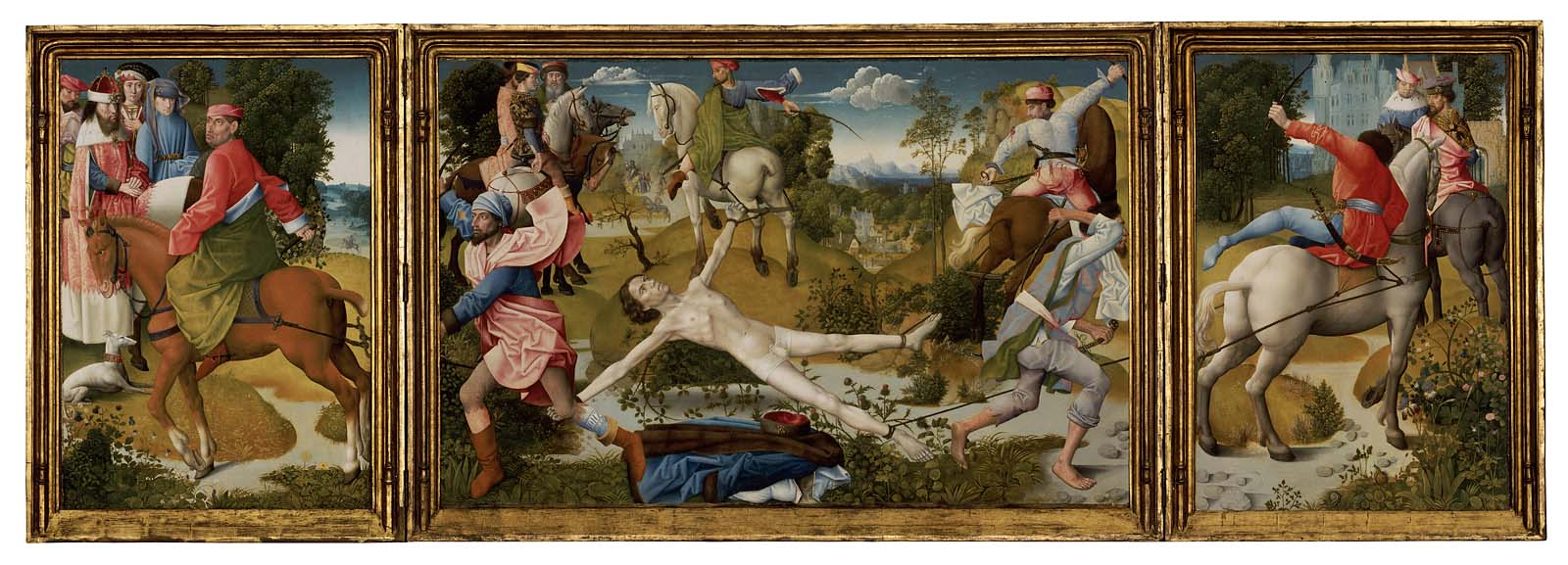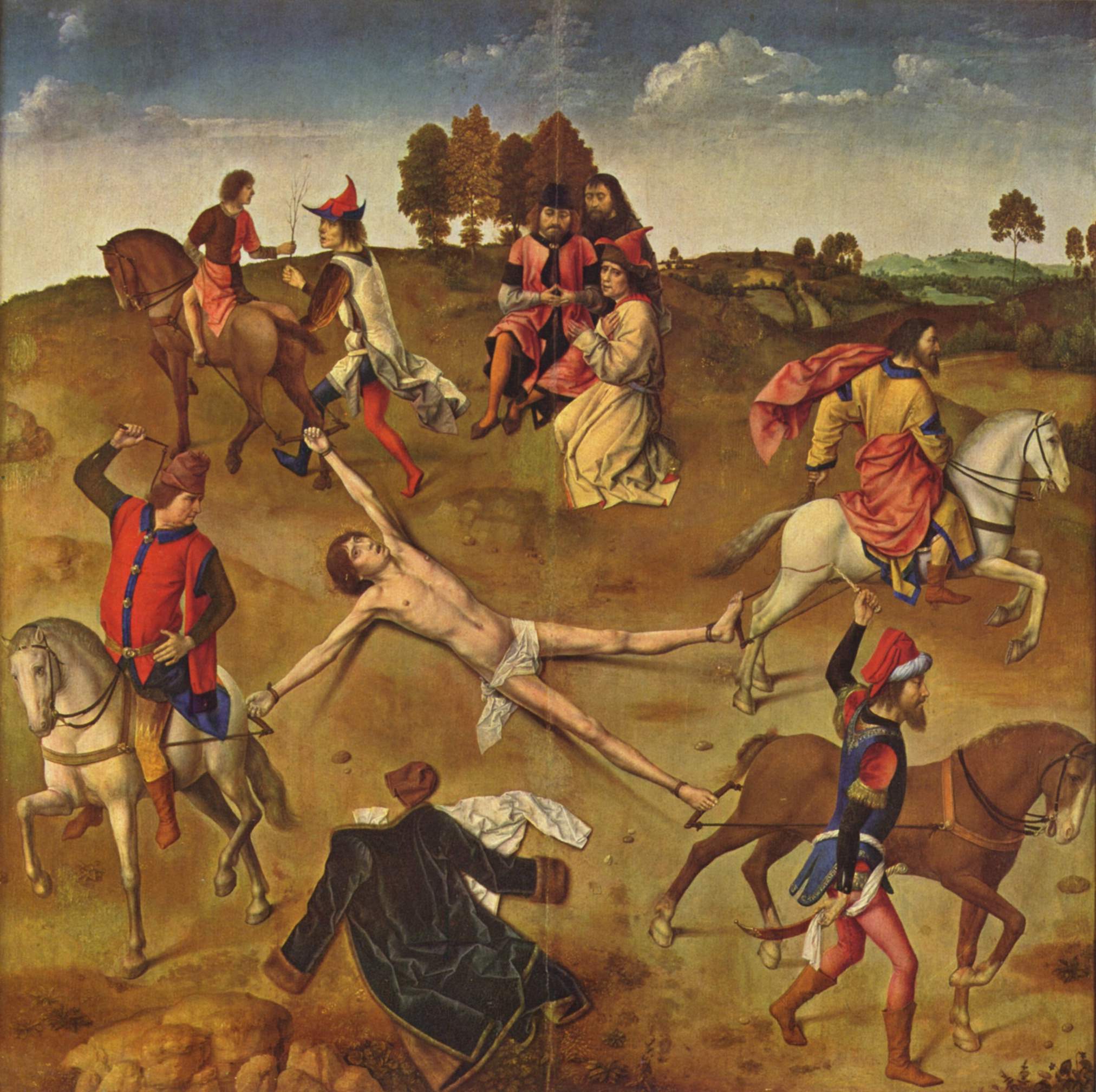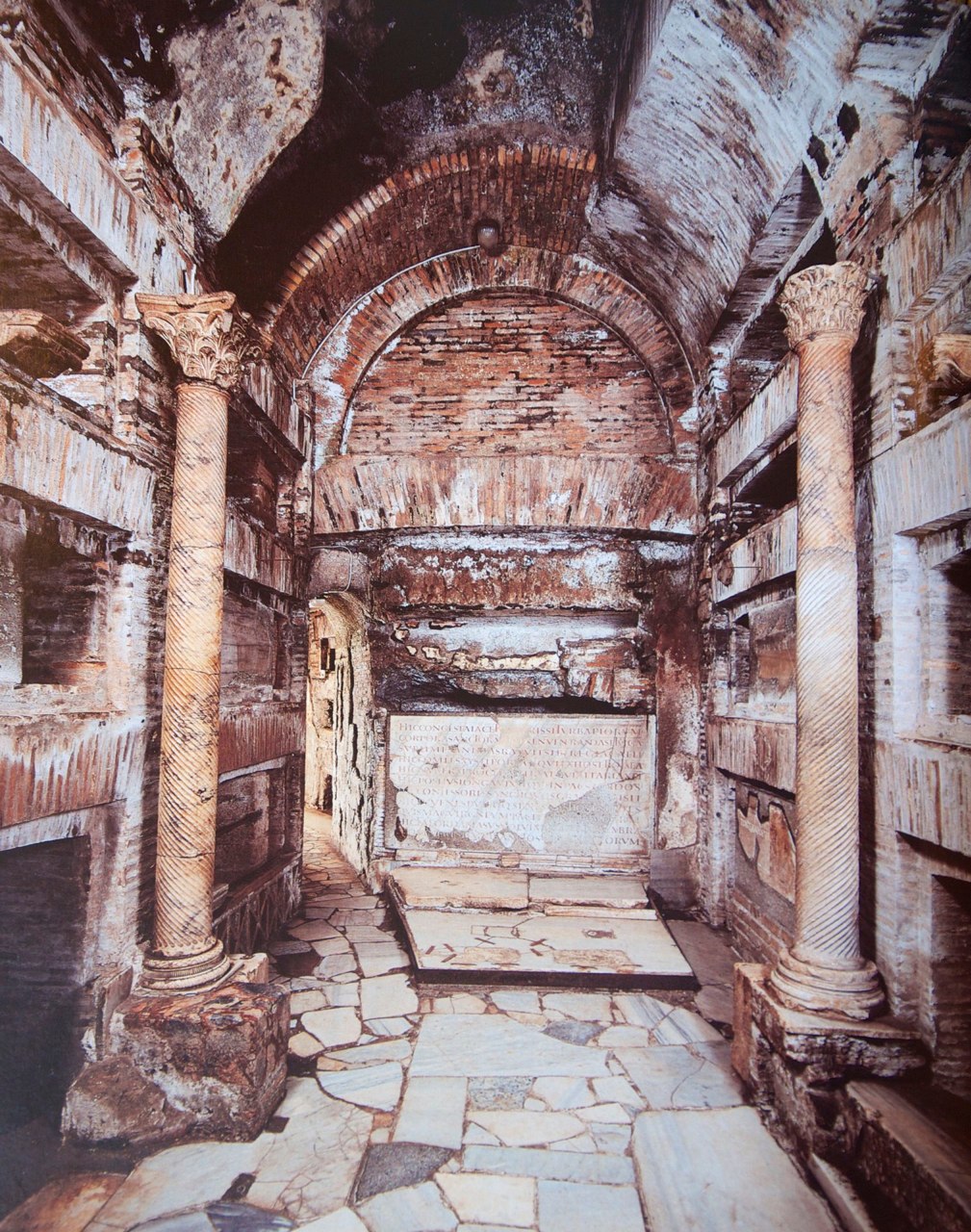-martyrdom of St Hippolytus, Boston Museum of Fine Arts (please click on the image for greater detail)
I love the story of Callistus & Hippolytus. It is a story of schism, of fracture, of falling out, of bad feeling, of denial of authority, and of ultimate reconciliation.
Hippolytus was one of the most prolific writers of the early Church, an early Christian theologian and scholar, writing against the heresies of Gnosticism and Montanism. He is noted especially for his work “The Apostolic Tradition”, which describes the liturgical customs of the early Roman Church from the third century AD and before.
Hippolytus was a rigorist, meaning he did not believe that sins after baptism could be forgiven. The Emperor Constantine himself had delayed his own baptism until his death bed for this reason. As an extension of this thinking, Hippolytus opposed readmitting those Christians who had committed heresy or who had apostatized under persecution back into the Church.
Callistus was a slave in the imperial Roman household. Put in charge of the bank by his master, he lost the money deposited, fled and was caught. After serving time for a while, he was released to make some attempt to recover the money. Apparently he carried his zeal too far, being arrested for brawling in a Jewish synagogue. This time he was condemned to work in the mines of Sardinia. He was released through the influence of the emperor’s mistress and lived at Anzio (site of a famous World War II beachhead).
After winning his freedom, Callistus was made superintendent of the public Christian burial ground in Rome (still called the cemetery of St. Callistus), probably the first land owned by the Church. The pope ordained him a deacon and made him his friend and advisor.
Callistus was elected pope by a majority vote of the clergy and laity of Rome, and thereafter was bitterly attacked by the losing candidate, Hippolytus. Hippolytus was very upset with the popes of his day that they were so lenient on returning heretics and apostates, who had denied the faith, said anything and done anything to save their own skin during the Roman persecutions up to that time. Hippolytus attacked Callistus on two fronts—doctrine and discipline.
Hippolytus seems to have exaggerated the distinction between Father and Son (almost making two gods) possibly because theological language had not yet been refined. He also accused Callistus of being too lenient, for reasons we may find surprising: (1) Callistus admitted to Holy Communion those who had already done public penance for murder, adultery, fornication; (2) he held marriages between free women and slaves to be valid—contrary to Roman law; (3) he authorized the ordination of men who had been married two or three times; (4) he held that mortal sin was not a sufficient reason to depose a bishop; (5) he held to a policy of leniency toward those who had temporarily denied their faith during persecution. Hippolytus had his followers elect him anti-pope, and began to appoint his own bishops, trying to establish a counter, parallel church.
Ultimately, Callistus was martyred during a local disturbance in Trastevere, Rome, and is the first pope (except for Peter) to be commemorated as a martyr in the earliest martyrology of the Church.
Ironically, Hippolytus was arrested during the following Roman persecution for being a Christian, albeit a schismatic one, and sentenced to hard labor in the mines of Sardinia. Those men so sentenced, and only men were sentenced to such a cruel fate, had their left Achilles tendon cauterized so they could not escape, had their right eye plucked out, and were castrated. Not only imprisoned, but also mutilated, the many Christian men sentenced to this cruel fate continued to share their faith with their fellow prisoners.
Also condemned to this cruel fate was the current Pope at the time, Pope St. Pontian. Pontian and Hippolytus met in their mutual misery. Hippolytus recanted and repented of his former schism. St Hippolytus, the only anti-pope ever canonized by the Church, died a martyr for the faith alongside his friend and confessor, Pope St Pontian.
-“The Torture of St. Hippolyte”, by Dieric Bouts the Elder, after 1468, oil on wood, 90 x 89.2 cm, St Salvator Cathedral, Bruges, Belgium
-crypt of Pope St Callistus I
“Christ, like a skillful physician, understands the weakness of men…He is easily found by those who live by faith.” -St. Hippolytus
“The world is a sea, in which the Church is set, like a ship tossed in the deep, but not destroyed. For she has with her the skilled Pilot, Christ.” -St Hippolytus of Rome
Prayer to St Callistus
O slave become Shepherd of the Universal Church,
firmly you defended her teaching
and recognized that all sins may be forgiven by the Lord, through her.
Martyr for the faith, pray we too remain firm
through all the difficult trials and temptations of this life.
O that by such incorrupt faith and unshaken courage,
may we be raised from the dust,
to rejoice with you before the Lord. Amen.
Easter Prayer of St. Hippolytus
Christ is Risen: The world below lies desolate
Christ is Risen: The spirits of evil are fallen
Christ is Risen: The angels of God are rejoicing
Christ is Risen: The tombs of the dead are empty
Christ is Risen – indeed from the dead,
the first of the sleepers,
Glory and power are His forever and ever. Amen.
Love,
Matthew



